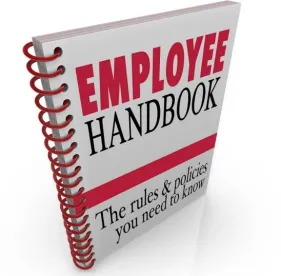On February 24 , 2017, a two-member majority (Members Mark Gaston Pearce and Lauren McFerran) of the National Labor Relations Board, over the dissent of Acting Chairman Philip Miscimarra, struck down yet another handbook policy in Cellco Partnership d/b/a Verizon Wireless, 365 NLRB No. 38 (2017). The fact that following the 2016 elections the former Board still retains a 2-1 majority, with two Board vacancies to fill, is frustrating enough. But using that majority to apply the Board's current case law under Lutheran Heritage Village-Livonia, 343 NLRB No. 646 (2004), and standards under Purple Communications, 361 NLRB. No. 126 (2014)—which almost surely will change when the Board attains a new majority—adds insult to injury. A new Board is widely expected to reverse or significantly modify current Board law regarding the "chilling" of concerted activity by isolated employee handbook statements (Lutheran Heritage) and the right of employees to use company email at work for non-business purposes to solicit unionization and engage in other concerted activities (Purple Communications). The question is when will that occur? In the meantime, current NLRB General Counsel Richard Griffin will continue to issue complaints and advance cases under the law as interpreted by the former Obama Board. Griffin's term expires in November of 2017.
Factual Background
In Cellco Partnership, the Board majority found that several rules in the company's 2014 and 2015 “Codes of Conduct” were facially unlawful and violated Section 8(a)(1) of the National Labor Relations Act (NLRA). Two Board members, applying the Lutheran Heritage standard, speculated that employees might "reasonably construe" and interpret the rules as preventing employees from exercising protected rights under Section 7 of the NLRA to engage in concerted activity. The rules in question follow below.
Section 1.8, "Employee Privacy," provides:
Verizon Wireless acquires and retains personal information about its employees in the normal course of operations, such as for employee identification purposes and provision of employee benefits. You must take appropriate steps to protect all personal employee information, including social security numbers, identification numbers, passwords, financial information and residential telephone numbers and addresses.
You should never access, obtain or disclose another employee’s personal information to persons inside or outside of Verizon Wireless unless you are acting for legitimate business purposes and in accordance with applicable laws, legal process and company policies, including obtaining any approvals necessary under these policies.
Section 2.1.3, "Activities Outside of Verizon Wireless," provides:
Many employees participate in an individual capacity in outside organizations (such as their local school board or homeowners’ association). Memberships in these associations can cause conflicts if they require decisions regarding Verizon Wireless or its products. If you are a member of an outside organization, you must remove yourself from discussing or voting on any matter that involves the interests of Verizon Wireless or its competitors. You must also disclose this conflict to your outside organization without disclosing nonpublic company information and you must disclose any such potential conflict to the VZ Compliance Guideline. Participation in any outside organization should not interfere with your work for Verizon Wireless. To the extent that your participation infringes on company time or involves the use of Verizon Wireless resources, your supervisor’s approval is required.
Section 3.4.1, "Prohibited Activities," provides, in relevant part:
You may never use company systems (such as e-mail, instant messaging, the Intranet or Internet) to engage in activities that are unlawful, violate company policies or result in Verizon Wireless’ liability or embarrassment. Some examples of inappropriate uses of the Internet and e-mail include: Pornographic, obscene, offensive, harassing or discriminatory content; Chain letters, pyramid schemes or unauthorized mass distributions; Communications primarily directed to a group of employees inside the company on behalf of an outside organization.
The Board’s Decision
Although not citing to any actual application of these three rules or the views actually expressed by any employees, the Board majority speculated that the rules possibly could be read by employees to "chill" their exercise of protected rights to communicate with one another regarding unionization and to engage in protected concerted activity such as striking or picketing.
Although the Board majority acknowledged that employers sometimes have substantial and legitimate interests in ensuring that certain information remains private, they believed that the language of the Section 1.8 "Employee Privacy" rule could reasonably be construed as preventing employees from exchanging information about compensation, discussing other terms and conditions of employment, or disclosing personal employee information in violation of Section 8(a)(1) of the NLRA.
As to the language of Section 2.1.3, "Activities Outside of Verizon Wireless," the full Board, Acting Chairman Miscimarra included, rejected a 2015 administrative law judge's (ALJ) decision upholding the rule as merely expressing the ethics of an employee's actions involving the company or its products while participating in outside organizations. The Board speculated that although the rule referred to employee involvement in school boards and homeowners associations as examples, it did not specifically exclude other organizations. Thus, the Board concluded, the rule could be read as prohibiting employee participation in unions and disclosure of any information deemed by the company to be detrimental to or in conflict with its business interests.
As to Section 3.4.1, "Prohibited Activities," the Board majority found that the ALJ correctly applied the Board's decision in Purple Communications to find the rule unlawful. While upholding the rule's restrictions on communications that contained "offensive" or "harassing" content and "chain letters," the Board found unlawful the rule's prohibitions on employee use of "email, instant messages, Intranet and Internet" to embarrass the employer, as well as "unauthorized mass distributions" and communications "primarily directed to a group of employees inside the company on behalf of an outside organization."
The Board’s order required nationwide notice posting, as well as notices to be mailed to employees of closed facilities where they had been employed when the rules were in effect.
Chairman Miscimarra's Dissent
Foreshadowing the potential reversals of both Lutheran Heritage and Purple Communications by a new Board majority, Acting Chairman Miscimarra cited his earlier dissents in William Beaumont Hospital, 363 NLRB No. 162 (2016) (where the majority applied Lutheran Heritage's "reasonably construe" standard) and Purple Communications, both of which he argued were wrongly decided.
Miscimarra argued that the Board's current interpretation of Lutheran Heritage "requires perfection that literally has become the enemy of the good" in evaluating the ambiguous wording of employer rules, policies, and handbook provisions. By the Board’s flyspecking of employer rules, policies, and handbook provisions, and its scrutiny of every word to ferret out any possible reading that employees may reasonably construe as restricting protected concerted activity, employer policies will not be safe no matter how carefully they are worded. As a result, employers must search for a perfectly worded policy or else forgo the policy altogether.
In place of the Lutheran Heritage standard, Acting Chairman Miscimarra, quoting a 1967 NLRB decision, would substitute a "proper balance" by which the Board evaluates a rule, policy, or handbook provision taking into account both (1) the "legitimate justification" associated with the disputed rule, and (2) whether the rule violates any NLRA-protected right to engage in concerted activity involving a "facially neutral" rule, policy, or handbook provision. "Facially neutral," according to Miscimarra, is defined as a rule which does not "expressly" restrict NLRA-protected activity, was not "adopted" in response to NLRA-protected activity, and has not "applied" to restrict NLRA-protected activity. He argued that the "balancing test" is required by the 1945 decision by the Supreme Court of the United States in Republic Aviation Corp. v. Labor Board and subsequently by its 1963 decision in National Labor Relations Board v. Erie Resistor Corp.
Miscimarra would apply the same "balancing test" in reversing Purple Communications by requiring the Board to weigh an employer's legitimate business justifications for prohibiting or restricting employees' use of the company's business email and other communication systems.
Significance of the Board’s Decision
Cellco Partnership is the latest among scores of Board decisions in which a simple Board majority opines that employees may "reasonably construe" isolated language in work rules, policies and employee handbooks would "chill" their potential exercise of Section 7 rights under the NLRA. The Board often selects isolated language from workplace rules for which there is no record evidence that have ever been applied, enforced or interpreted by employees as "chilling" the exercise of Section 7 rights. For employers, this presents a challenge in predicting which language in work rules, policies, and handbooks will next be targeted by the Board. The current Board does not attempt to balance its interpretation against the employer's legitimate business interests in establishing and maintaining the rule. That balance presumably must await the confirmation of a more balanced Board.




 />i
/>i

